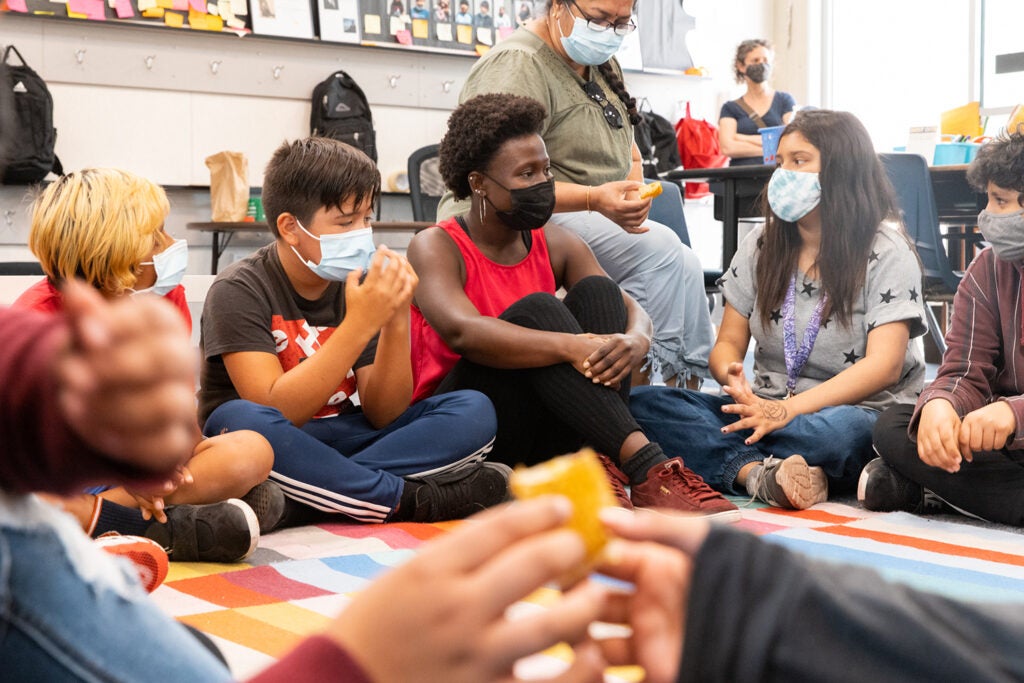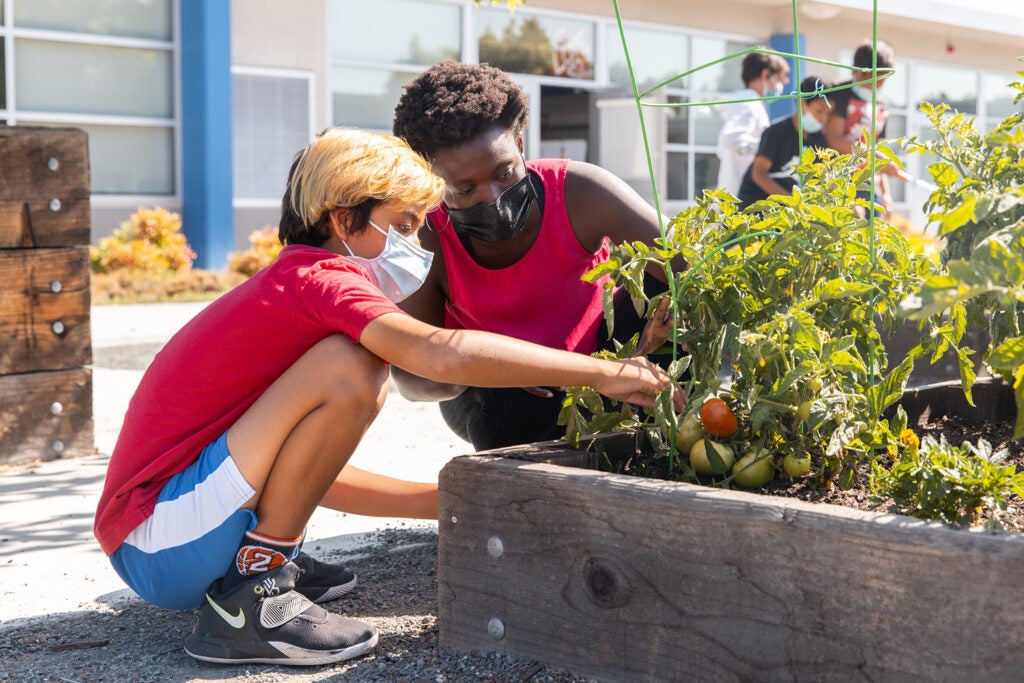After a year of virtual learning, local kids and new teachers benefit from a collaboration between Stanford and the Sunnyvale School District
A summer school program draws newly credentialed teachers from the Stanford Teacher Education Program to help address the effects of the pandemic.
Aminata Kalokoh-Odeh learned a massive amount about teaching elementary school during her year in the Stanford Teacher Education Program (STEP), from best practices for teaching different subject areas to how to work with the strengths and needs of a diverse group of students.
Go to the web site to view the video.
Still, her time in the program didn’t quite go as planned. Students in the Graduate School of Education (GSE) master’s program ordinarily spend several days a week alongside a veteran teacher at a local school, sharing the day-to-day experience of running a class. And last year was no ordinary year.
“It was a great program, but the whole year, we were online,” said Kalokoh-Odeh, MA ’21, who graduated in June without setting foot in a physical classroom. (Some STEP students were able to work in person at their school placement for some period of time, depending on the school’s circumstances, while others were exclusively remote throughout the year.)
When Kalokoh-Odeh learned that STEP was partnering with the Sunnyvale School District (SSD) on a summer school program this year for students in kindergarten through eighth grade, she jumped at the chance to participate.
She went on to spend much of her summer break at Lakewood Elementary School in Sunnyvale, getting the classroom time she missed while school doors were closed during the pandemic.
“This was really important for me because I wanted to have that in-person [time], creating community with the students, working on my classroom management style,” said Kalokoh-Odeh, who will be teaching eighth grade at Aspire East Palo Alto Charter School this fall. “I didn’t want to go into a full-time teaching position without that experience.”
The summer program was one of eight projects led by Stanford faculty that received funding this year from the university’s Office of Community Engagement, in collaboration with the Bill Lane Center for the American West in the School of Humanities and Sciences, to work with community-based organizations and local government agencies to address the effects of the COVID-19 pandemic.
The Stanford-SSD collaboration not only provided extra support to students in the district after a year of mostly remote learning, it also gave 13 newly minted STEP graduates a preview of what they’ll face in the classroom when schools return more fully to in-person learning. The grant supported the graduates’ summer salaries, making it possible for them to participate.
“The last year and a half has been a really challenging one for us and for our school partners,” said Ira Lit, MA ’90, PhD ’04, a professor at the GSE and faculty director of STEP. “We’re really excited that we had the opportunity to help support the school district, and to give our graduates – who are now credentialed California teachers – some of that in-person experience to build their confidence for the teaching jobs they’re starting this fall.”
An emphasis on well-being
The Sunnyvale School District is one of many in the San Francisco Bay Area that STEP has worked with over the years on field placements to help prepare teacher candidates for their first year on the job. But this summer’s collaboration was different, bringing new graduates on site after a tumultuous year.

Drawing on her own background in theater, Kalokoh-Odeh took on a project with the class to write a play about the 1965-70 Delano Grape Strike. (Image credit: Andrew Brodhead)
The collaboration was especially welcome as the district expanded its summer school program, responding to a mandate (and supplemental government funding) to accommodate more students. Some 700 elementary and middle school students were enrolled in Sunnyvale’s summer school program this year, about twice that of previous years.
“There’s been a huge emphasis this summer in particular on social-emotional well-being, establishing positive connections and re-establishing school as school,” said Chin Chin Chiu, an SSD summer school principal, who works for the district as a behavior intervention services coordinator during the year.
Students are re-learning the norms of classroom life: “How do I come into school? What is my routine in terms of how I transition into the classroom or transition out, or do my independent work or participate in group work, even things like playing at recess – all of those things we’ve had to re-teach,” said Chiu.
Passion projects
One new feature of the summer school session designed to ease kids’ re-entry into school life was what SSD administrators called “passion projects,” chosen by each teacher based on their individual interests.

To help ease the re-entry into school life, Lakewood students participated in “passion projects” such as tending a vegetable garden in the school courtyard. (Image credit: Andrew Brodhead)
At Lakewood Elementary, where Kalokoh-Odeh was paired this summer with veteran teacher Karen Garcia, their class of rising fifth-graders spent time each day tending a lush vegetable garden in the school courtyard and taking part in classroom activities focused on nutrition and agriculture.
Drawing on her own background in theater, Kalokoh-Odeh took on a project with the class to write a play about the 1965-70 Delano Grape Strike, a labor strike to protest the treatment of predominantly Filipino farmworkers.
“When she told me she was interested, I assumed she would write it and the kids would perform it,” said Garcia. “But they wrote it together. She completely blew my mind. I have no theater arts background whatsoever, so watching her help the kids find their author’s voice has been really inspiring.”
For Garcia, who has taught at SSD for more than 20 years, the experience reinforced one of her favorite aspects of partnering with new and prospective teachers: the chance to learn from the skills and perspective they bring to her classroom. “It’s wonderful, being able to welcome in new teachers who have different experiences or new ideas on the cutting edge of their practices,” she said. “It invigorates you as a veteran teacher, to keep your own professional journey going as well.”
Learn more about Stanford’s collaboration with communities in the region through the Office of Community Engagement, as well as other collaborations between Stanford Graduate School of Education and community partners.